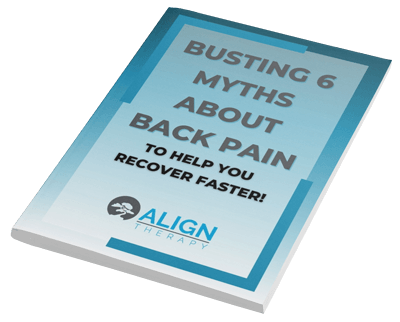Scoliosis-specific exercises like the Schroth Method and the Scientific Exercise Approach to Scoliosis (SEAS) have become pivotal for conservative treatment of scoliosis at our clinics. These evidence-based practices focus on strengthening muscles, retraining posture, and halting or reversing the progression of spinal curves.
However, many of my patients, particularly adolescents, often face significant challenges in maintaining these techniques. Even though these techniques have been shown to be effective in the research, it is heart breaking sometimes to see when it fails because of these main struggles. Most of these challenges, however, can be mitigated with relatively simple strategies.
Let’s explore these struggles and why they matter in the journey of treating scoliosis. In our next blog post we will dive into how to overcome these!
1. Consistency is Key—and Challenging
One of the biggest hurdles my patients face in scoliosis treatment is adhering to the prescribed exercise program consistently. The Schroth Method and SEAS Approach are effective, but their success depends heavily on regular practice.
- The Demands of Adolescence: Adolescents, the primary demographic for scoliosis treatment, often juggle school, extracurricular activities, and social commitments. Adding daily or weekly exercises to an already packed schedule can feel overwhelming.
- Parental Support: Younger patients often rely on their parents for reminders and encouragement. However, as routines get busier, even the most well-intentioned parents may struggle to ensure adherence.
- Motivation and Discipline: Patients may not always feel motivated to perform exercises that don’t yield immediate visible results. Unlike sports or other activities, scoliosis exercises are very monotonous, making it harder to sustain interest over time.
2. Precision in Execution
The effectiveness of the Schroth and SEAS methods lies in their specificity. Each exercise is tailored to the person’s individual curve, and must be done with precision and control to achieve the desired results.
- Learning the Techniques: Initial sessions require professional guidance to master the exercises. However, practicing them independently at home, even though this is the goal, can lead to mistakes, reducing their effectiveness. I have seen those trying to learn these techniques on their own, which, even though it can be done, is extremely challenging and fraught with errors.
- Challenges in Quality: Without frequent check-ins with a certified therapist, you may unknowingly develop improper habits. These small deviations can accumulate, limiting progress and even causing frustration, which leads to less consistency.
- Body Awareness: Adolescents, and also adults, can lack the proprioception (body awareness) needed to maintain correct posture and engage the appropriate muscles, making precise execution more difficult.
Check out this video demonstrating precision and great execution of The Schroth Method:
3. The Long Timeline of Treatment
Scoliosis exercises are not a short-term solution. For many of my patients, these programs need to be sustained until skeletal maturity—many times spanning years! This is unlike many other treatments we do in physical therapy and requires a different mindset.
- Patience in Progress: For adolescents undergoing growth spurts, waiting to see meaningful improvements in posture or curve stabilization can be frustrating. Unlike bracing, where correction can be seen on x-ray while wearing the brace, exercise benefits are often gradual and harder to perceive on a day to day basis.
- The Psychological Toll: The idea of committing to years of treatment can weigh heavily on patients and their families. It requires a shift in mindset—from expecting a “quick fix” to embracing a long-term plan of attack.
4. The Consequences of Falling Behind
Consistency and precision aren’t just ideals—they are necessities. Failing to follow through with the exercises can lead to curve progression, which becomes harder to correct once it has happened. Without a time machine, we can’t go back and undo that progression.
- Risk of Progression: During periods of rapid growth, untreated or poorly managed scoliosis can worsen significantly. If a curve exceeds 50 degrees, the likelihood of progression into adulthood increases. This is when surgical intervention becomes the preferred method of stopping future progression..
- Catching Up Takes More Effort: If scoliosis progresses due to inconsistent treatment, reversing or even halting this progression becomes much more labor-intensive. For patients and therapists alike, regaining lost ground requires renewed focus.
5. Staying Engaged: Overcoming Monotony
The repetitive nature of scoliosis-specific exercises can make many patients lose interest over time. Especially in our current world of constant entertainment, these exercises can be boring and this can add to the challenge.
- Incorporating Variety: Therapists should introduce variations of exercises to keep in-clinic and at-home sessions engaging. However, these adjustments still require patient buy-in and an effort to incorporate them regularly.
- The Role of Progress Tracking: Visible improvements, such as better posture or reduced pain, can help motivate us. Regular assessments and positive reinforcement from therapists play a crucial role in sustaining morale. Using a surface topography app, like the Momentum Spine App, can also be helpful to see progress and re-motivate.
Check out this video on the Momentum Spine App:
6. Support Systems: The Unsung Heroes
Behind every successful scoliosis treatment is a network of supportive caregivers and professionals. With our adolescent and juvenile patients, their parents are crucial in getting great outcomes. Without a support system, it is very hard to get the results you are looking and hoping for.
- Parental Involvement: Parents must balance encouragement with accountability. Creating a structured routine, celebrating small victories, and fostering open communication about your frustrations have made a significant difference in the experience of my patients.
- Professional Expertise: Regular check-ins with therapists trained in the Schroth and SEAS methods ensure that exercises are performed correctly and adapted as the patient grows. Those professionals not familiar with scoliosis and who haven’t been trained in specific treatment methods struggle to provide the guidance necessary for desired results.
Conclusion
Treating scoliosis with the Schroth Method or SEAS Approach is both a challenge and an opportunity. While the road to success demands consistency, precision, and long-term commitment, the rewards—reduced pain, stabilized curves, avoiding surgery, and improved quality of life—make your effort worthwhile. For patients and their families, overcoming these struggles requires resilience, support, and an unwavering focus on the goal: taking control of scoliosis and thriving despite it.
If you or a loved one are considering scoliosis-specific treatment, check out our scoliosis portal to see if this is the right fit for your situation. With the right approach, scoliosis doesn’t have to hold you back.
In our next blog post we will discuss more solutions to the 6 struggles we discuss above. Since becoming certified in SEAS and Schroth in 2015, I have found some great tips to address these challenges and improve the results of treatment. Stay tuned for that post!
Hope you found this helpful.
David Butler, DPT
Certified Schroth and SEAS Therapist



